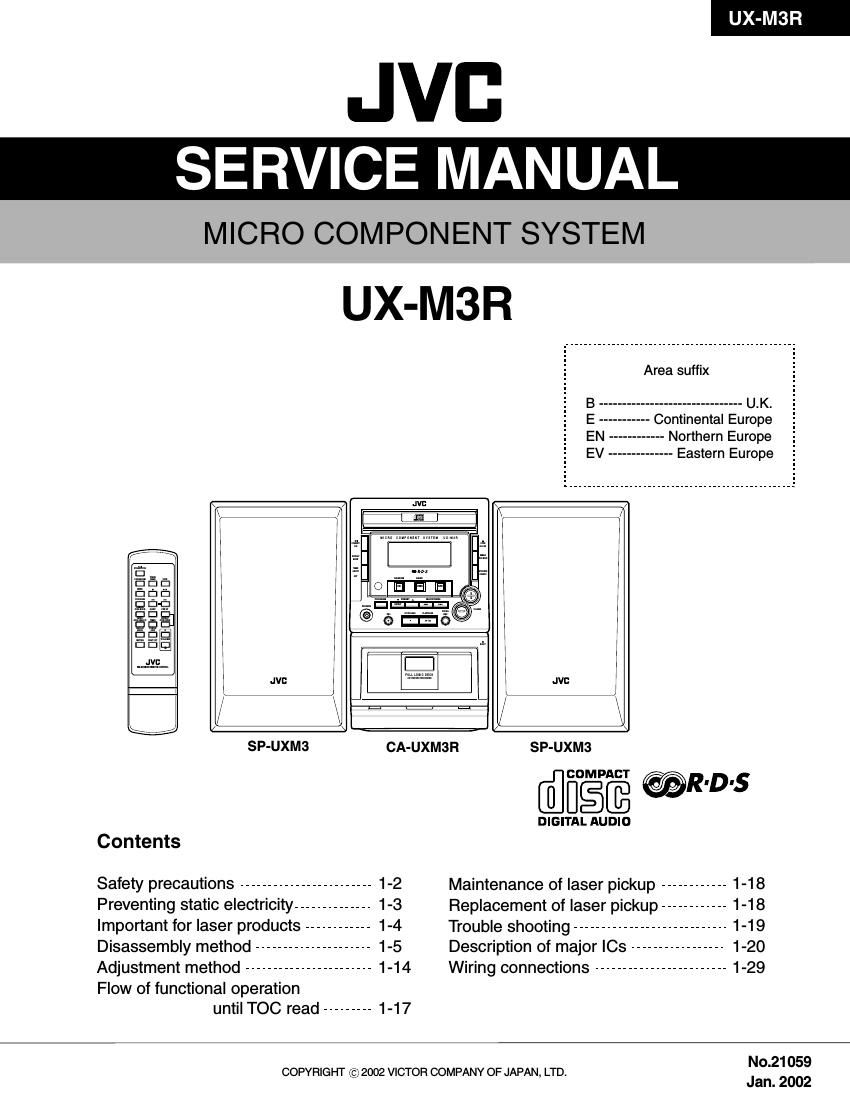Jvc UXM 3 R Service Manual
This is the 30 pages manual for Jvc UXM 3 R Service Manual.
Read or download the pdf for free. If you want to contribute, please upload pdfs to audioservicemanuals.wetransfer.com.
Page: 1 / 30
